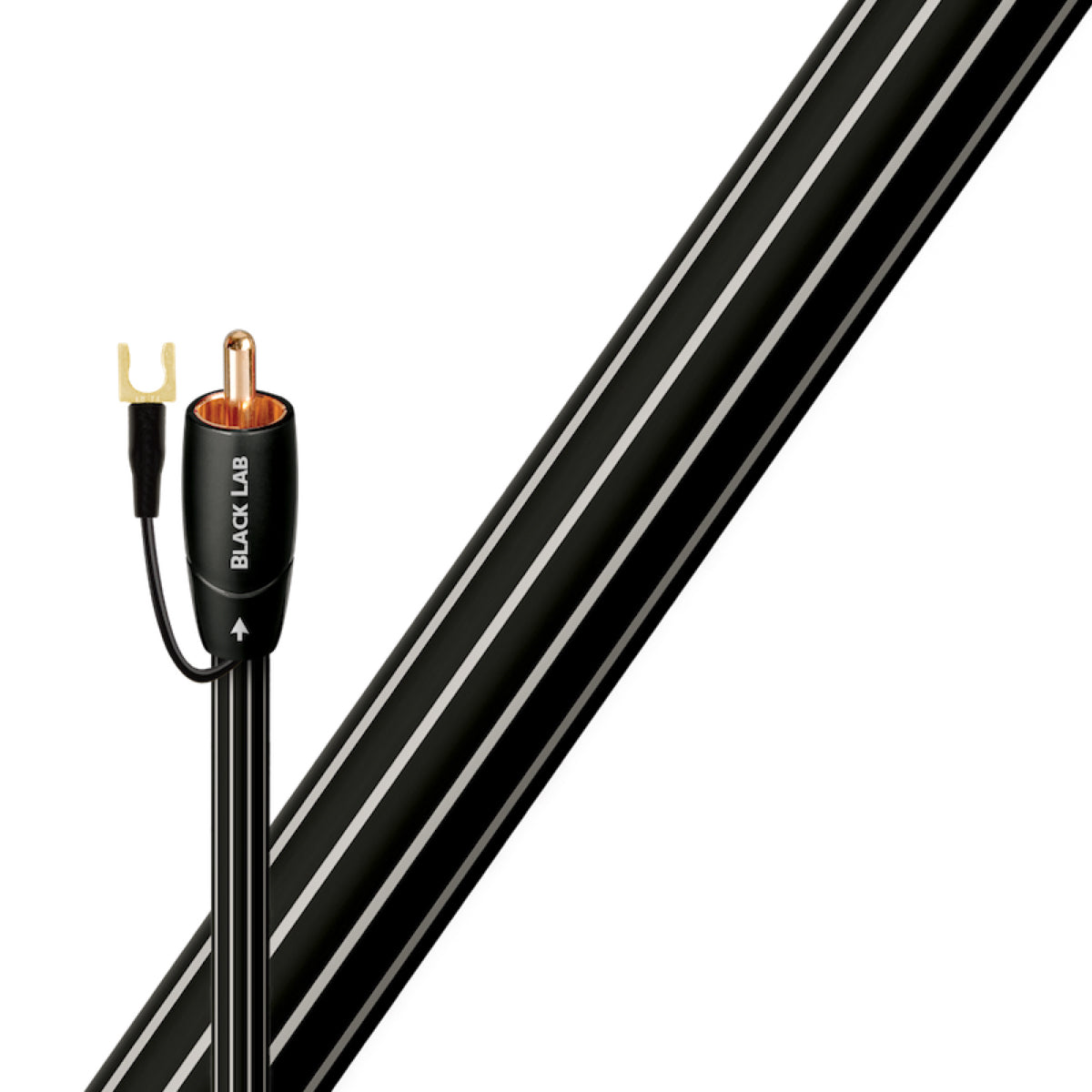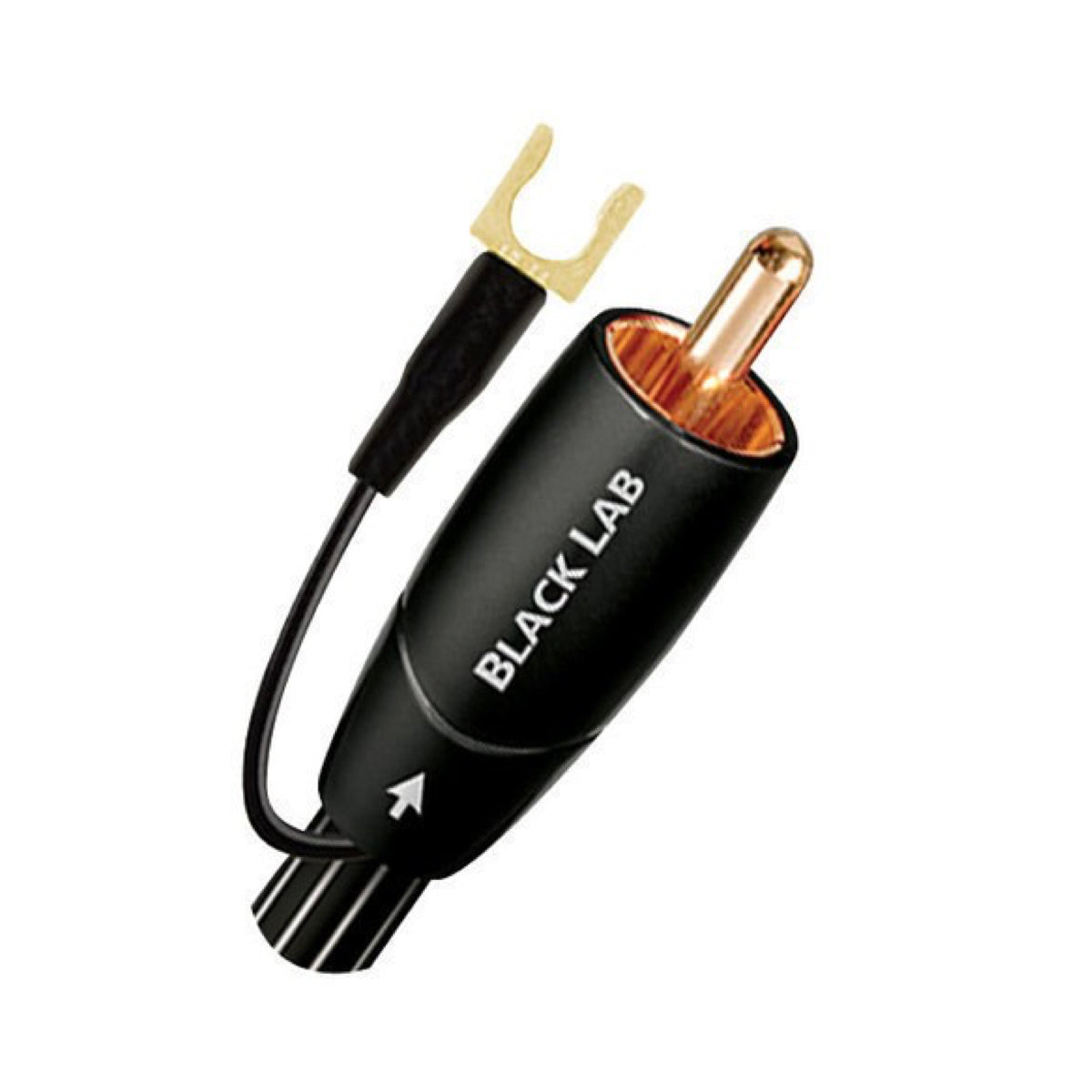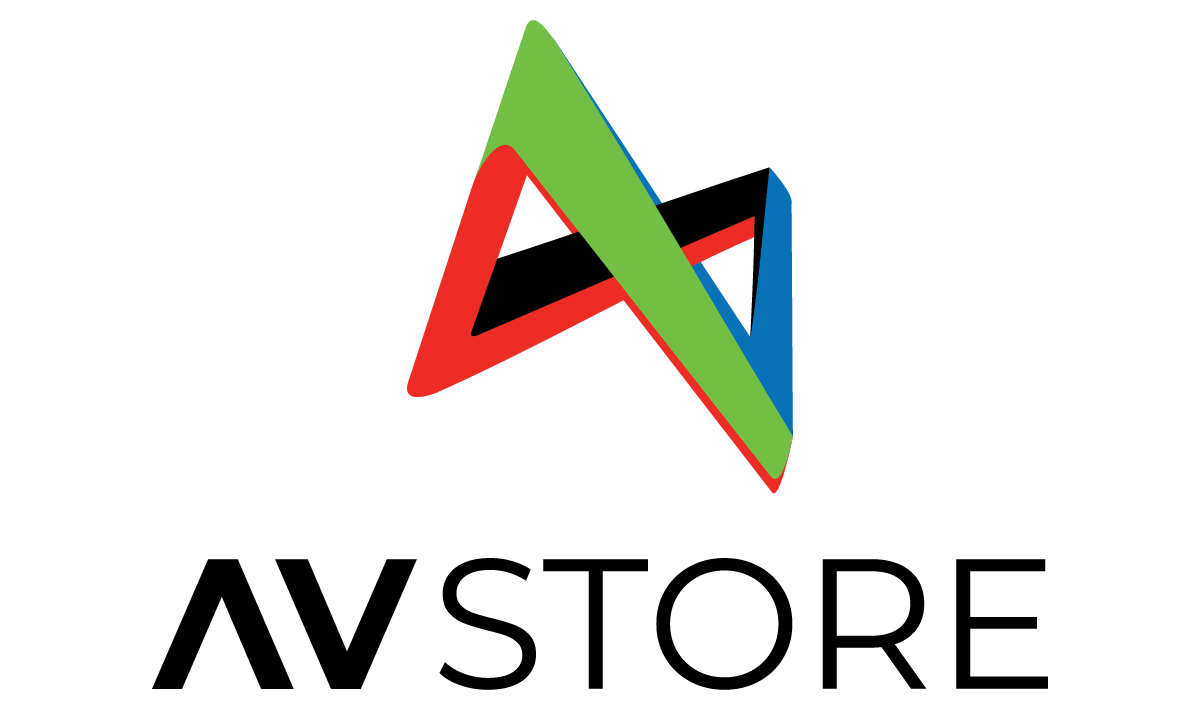

Audioquest Black Lab - Subwoofer Cable
Includes GST of Rs. 1,524

GET GST INPUT
Ever wondered why speakers, amplifiers, projectors etc. come with a slightly heftier price tag in India compared to their overseas counterparts? Well, part of the answer lies in our country's Goods & Services Tax (GST).
But here's the kicker: Don't let that GST input slip through your fingers! Especially when some of the products we supply carry a GST rate of 18% and 28%.
At AVStore, we provide you with a GST compliant invoice for every purchase.
Simply put in your GST number during the checkout to avail an offset.

- Description
- Specifications
- Reviews
Black Lab subwoofer cable that eliminates strand–interaction distortion with solid, long–grain copper conductors, the AudioQuest Black Lab Subwoofer Cable is ready to take on the challenge of your home theater. Utilizing solid Long–Grain Copper (LGC), the Black Lab delivers a smoother and clearer sound that's superior to other cables that use regular Oxygen–Free High–Conductivity copper.
Contrary to their name, Black Labs’ heritage actually traces back to Newfoundland in the 1700s, when they were first known as “Saint John’s Dogs.” When this large Newfoundland-based breed was mixed with smaller water dogs, the result is the dog now known as the Labrador. Labradors (Black or otherwise) are known for their dedication to duty, their highly developed sense of smell and hearing, and their endless capacity for playing “fetch” (they are “retrievers” after all!). These traits combine to make Labradors excellent service dogs for the handicapped as well as wonderful pets.
SOLID LONG-GRAIN COPPER (LGC) CONDUCTORS
Solid conductors eliminate strand-interaction distortion. Black Lab’s solid Long-Grain Copper allows a smoother and clearer sound than cables using regular OFHC (Oxygen-Free High-Conductivity) copper. OFHC is a general metal industry specification regarding “loss” without any concern for distortion. LGC has fewer oxides within the conducting material, less impurities, less grain boundaries, and definitively better performance.
FOAMED-POLYETHYLENE INSULATION
Any solid material adjacent to a conductor is actually part of an imperfect circuit. Wire insulation and circuit board materials all absorb energy (loss). Some of this energy is stored and then released as distortion. Greyhound uses air-filled Foamed-Polyethylene Insulation on both conductors because air absorbs next to no energy and Polyethylene is low-loss and has a benign distortion profile. Thanks to all the air in Foamed-PE, it causes much less of the out-of-focus effect common to other materials.
METAL-LAYER NOISE-DISSIPATION SYSTEM (NDS)
100% shield coverage is easy. Preventing captured RF Interference from modulating the equipment’s ground reference requires AQ’s Noise-Dissipation System. Noise-Dissipation System prevents a significant amount of RFI from reaching the equipment’s ground plane.
SYMMETRICAL COAX GEOMETRY
Identical + and – conductors prevent the shield being used as an inferior audio conductor.
COLD-WELDED GOLD-PLATED PLUGS
This plug design allows for a connection devoid of solder, which is a common source of distortion. Because the ground shells are stamped instead of machined, the metal can be chosen for low distortion instead of machinability.
GROUNDING
Sometimes there is a hum problem unless the subwoofer and AV receiver (or surround-sound processor) are attached to each other using a separate wire. If your system has a hum problem, try attaching the little spade-lug tails to the metal chassis of the subwoofer amplifier and to the chassis of the sending component. Usually, this extra wire will not be needed.
Black Lab subwoofer cable that eliminates strand–interaction distortion with solid, long–grain copper conductors, the AudioQuest Black Lab Subwoofer Cable is ready to take on the challenge of your home theater. Utilizing solid Long–Grain Copper (LGC), the Black Lab delivers a smoother and clearer sound that's superior to other cables that use regular Oxygen–Free High–Conductivity copper.
Contrary to their name, Black Labs’ heritage actually traces back to Newfoundland in the 1700s, when they were first known as “Saint John’s Dogs.” When this large Newfoundland-based breed was mixed with smaller water dogs, the result is the dog now known as the Labrador. Labradors (Black or otherwise) are known for their dedication to duty, their highly developed sense of smell and hearing, and their endless capacity for playing “fetch” (they are “retrievers” after all!). These traits combine to make Labradors excellent service dogs for the handicapped as well as wonderful pets.
SOLID LONG-GRAIN COPPER (LGC) CONDUCTORS
Solid conductors eliminate strand-interaction distortion. Black Lab’s solid Long-Grain Copper allows a smoother and clearer sound than cables using regular OFHC (Oxygen-Free High-Conductivity) copper. OFHC is a general metal industry specification regarding “loss” without any concern for distortion. LGC has fewer oxides within the conducting material, less impurities, less grain boundaries, and definitively better performance.
FOAMED-POLYETHYLENE INSULATION
Any solid material adjacent to a conductor is actually part of an imperfect circuit. Wire insulation and circuit board materials all absorb energy (loss). Some of this energy is stored and then released as distortion. Greyhound uses air-filled Foamed-Polyethylene Insulation on both conductors because air absorbs next to no energy and Polyethylene is low-loss and has a benign distortion profile. Thanks to all the air in Foamed-PE, it causes much less of the out-of-focus effect common to other materials.
METAL-LAYER NOISE-DISSIPATION SYSTEM (NDS)
100% shield coverage is easy. Preventing captured RF Interference from modulating the equipment’s ground reference requires AQ’s Noise-Dissipation System. Noise-Dissipation System prevents a significant amount of RFI from reaching the equipment’s ground plane.
SYMMETRICAL COAX GEOMETRY
Identical + and – conductors prevent the shield being used as an inferior audio conductor.
COLD-WELDED GOLD-PLATED PLUGS
This plug design allows for a connection devoid of solder, which is a common source of distortion. Because the ground shells are stamped instead of machined, the metal can be chosen for low distortion instead of machinability.
GROUNDING
Sometimes there is a hum problem unless the subwoofer and AV receiver (or surround-sound processor) are attached to each other using a separate wire. If your system has a hum problem, try attaching the little spade-lug tails to the metal chassis of the subwoofer amplifier and to the chassis of the sending component. Usually, this extra wire will not be needed.


